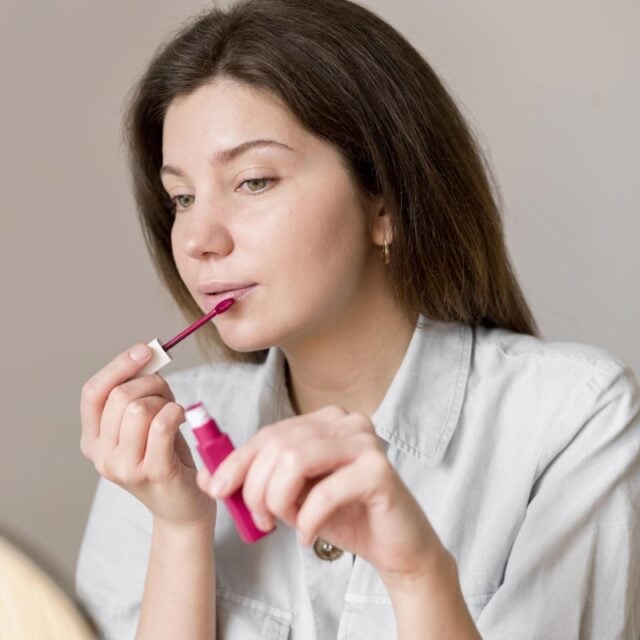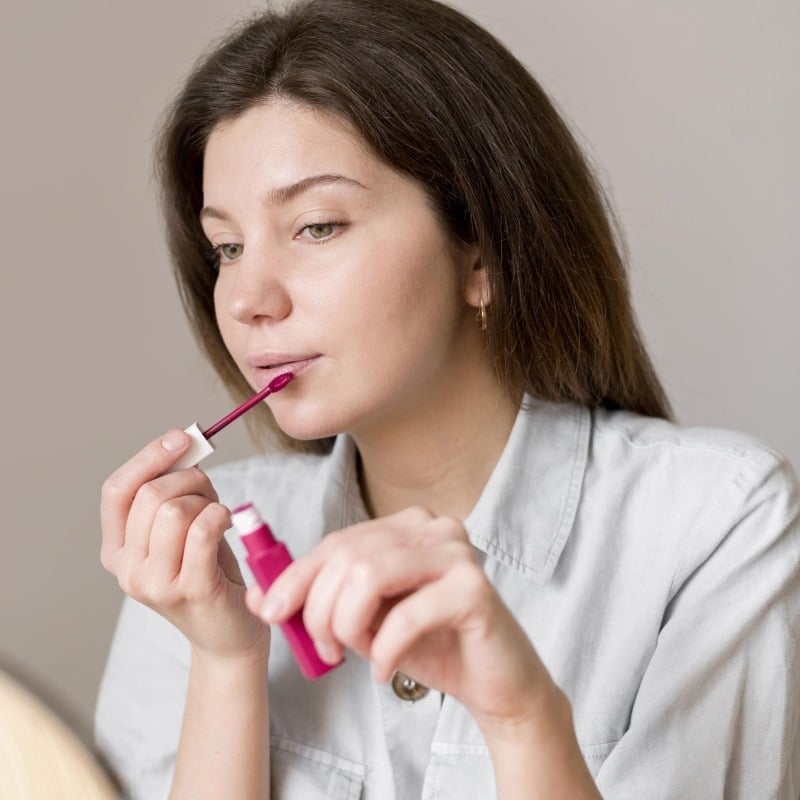
This distinction is not only scientific; it also determines how a product is legally classified under Regulation (EC) No. 1223/2009. In this guide, we will explore how the EU differentiates between cosmetic lip plumpers and those that fall into the category of borderline cosmetic medical product EU. We will also discuss the specific guidance from the European Commission’s Borderline Manual, and how Certified Cosmetics’ CPSR service and borderline cosmetic assessment help brands achieve compliance with confidence.
The Legal Definition of a Cosmetic Product
Under EU Cosmetics Regulation 1223/2009, a cosmetic product is any substance or mixture intended to be placed in contact with external parts of the human body with the purpose of cleaning, perfuming, changing appearance, protecting, or keeping the skin in good condition.
For lip plumping products, the definition of “changing appearance” is central. If the purpose of the formulation is to make lips appear fuller, smoother, or more hydrated, without altering the body’s physiological functions, it fits within the cosmetic product classification EU. However, if the product’s action goes beyond appearance, triggering a biological response such as increased blood flow or swelling due to irritation, it may no longer qualify as a cosmetic. The line between these two categories is fine but essential: cosmetic action aims for a temporary aesthetic effect on the skin’s surface, while medicinal or physiological action involves changes in tissue function or structure.
EU Borderline Manual: Guidance on Lip Plumping Products
The European Commission’s Manual on the Scope of Application of the Cosmetics Regulation (July 2024) explicitly includes lip plumping products under section 3.3.15. According to this guidance: “Products intended to increase lip volume by physical means or by hydration are cosmetics. Products which achieve this effect by causing an irritation reaction or by pharmacological action should be considered medicinal products.”
(European Commission Borderline Manual, Section 3.3.15)
This statement highlights the EU’s position clearly:
- Cosmetic classification applies when the product achieves a visual improvement, for instance, smoother, hydrated, or optically fuller lips through film-forming agents, oils, or hyaluronic acid.
- Medicinal classification applies when the product induces a physiological response, for example, by causing irritation, redness, or vascular dilation to swell the lips.
Therefore, the distinction depends not only on the intended claim but also on how the product achieves the result, its mode of action.
Claims, Composition, and Mechanism of Action
When assessing whether a lip plumping product is cosmetic, EU authorities evaluate several interconnected elements:
The Claims
Cosmetic claims usually talk about how something looks or feels, like “enhances natural lip volume,” “gives lips a plumper look,” or “smooths and moisturizes lips.” These are all cosmetic improvements and are still part of cosmetics. In contrast, claims like “stimulates collagen synthesis,” “restores lip tissue,” or “activates microcirculation” imply physiological modification, indicating a borderline cosmetic medical product EU or even a medicinal product.
The Composition
Cosmetics that use hydrating agents, plant butters, or film-forming polymers work on the surface of the skin. However, ingredients that are meant to irritate, like capsaicin, menthol, or niacin derivatives, may cause swelling by stimulating the body in a way that changes the classification to a medicinal mechanism.
The Mode of Action
The EU looks at both the desired look and the biological process that makes it happen. A lip balm that makes lips look fuller by moisturizing them is a cosmetic; one that makes blood flow better by irritating the skin is not. This “mechanism of effect” is still the most important thing in borderline evaluations.
Presentation and Consumer Perception
The marketing and presentation of a lip-plumping product can also influence its classification. A product that is marketed as a cosmetic enhancer for a fuller look fits well into the cosmetic category. But suppose the packaging, labeling, or advertising language suggests treatment, cell stimulation, or medical-grade lip volume increase. In that case, it may mean that the product is meant to be used as medicine.
When brands say things like “clinically proven to increase lip size” or “medical formula for long-term enhancement,” they should be careful because these phrases could trick regulators into thinking the product is a medicine. Certified Cosmetics says that you should use words that focus on improving appearance, like “visibly fuller lips,” “enhanced lip smoothness,” or “hydrated volume.” These words should be backed up by tests of how well the cosmetics work.
Certified Cosmetics Support for Lip Plumping Products
At Certified Cosmetics, we help brands navigate complex borderline cases like lip plumping products with a systematic, compliant approach. Our expert team provides:
- CPSR Service (Cosmetic Product Safety Report): Comprehensive evaluation of product safety, toxicology, and exposure to ensure compliance under the cosmetics regulation.
- Borderline Cosmetic Assessment: Scientific and regulatory review of the formulation, claim wording, and mode of action to confirm proper classification.
- EU Cosmetic Product Classification Support: Guidance on how to prepare and justify classification within the cosmetic framework, in line with the European Commission’s manual.
- Label and Marketing Review: Ensuring your claims, visuals, and promotional texts align with the legal scope of cosmetics.
Through these services, Certified Cosmetics empowers brands to market lip plumping products safely, avoiding compliance risks while maintaining strong consumer appeal.
Key Takeaways
- Lip plumping products that act by hydration or surface-level effects are cosmetics.
- Products that induce irritation or affect biological processes are medicinal.
- The mode of action is the key factor in EU classification.
- Proper claim wording and formulation review prevent regulatory misclassification.
- Certified Cosmetics provides CPSR service and borderline cosmetic assessment to ensure full compliance.
Whether a lip plumping product qualifies as a cosmetic depends on the balance between appearance enhancement and biological activity. This distinction is often subtle, and even minor differences in ingredient concentration or claim wording can alter the classification outcome. By proactively conducting a borderline cosmetic assessment and obtaining a CPSR report, brands can clearly demonstrate compliance and avoid legal uncertainties. Certified Cosmetics helps bridge the gap between product innovation and regulation, ensuring that lip-enhancing products not only deliver visible results but also meet the strict standards of EU cosmetic legislation.
Frequently Asked Questions
Q1. Can lip plumping products with a tingling effect still be cosmetics?
Yes, if the tingling is mild, temporary, and results from surface stimulation without altering physiological functions. However, stronger irritation or lasting swelling could trigger reclassification.
Q2. Are hyaluronic acid lip balms considered cosmetics?
Yes. When used topically for hydration or appearance improvement, hyaluronic acid-based products are clearly cosmetic. Injectable hyaluronic acid fillers, however, are medical devices.
Q3. How does Certified Cosmetics help with borderline product evaluation?
We provide full borderline cosmetic assessment, CPSR service, and EU cosmetic product classification guidance, ensuring your formulation, claims, and labeling remain fully compliant.
Q4. What happens if a product is misclassified?
Misclassification can lead to enforcement actions, including product recalls, market bans, or re-labeling. Proper classification before launch prevents financial and reputational risks.
Conclusion
Lip plumping products highlight the complexity of defining where cosmetic innovation ends and medicinal effect begins. Within the EU framework, the determining factors are intended function, claims, and mode of action. When a lip product simply enhances the appearance of fullness through hydration or surface film formation, it remains a cosmetic. But if it works by causing swelling or stimulating physiological processes, it crosses into medicinal territory.
For brands developing lip volume products, Certified Cosmetics provides end-to-end expertise, from CPSR service and borderline cosmetic assessment to cosmetic product classification EU documentation. With our regulatory insight, your brand can launch confidently, ensuring every lip product is safe, compliant, and correctly defined.

